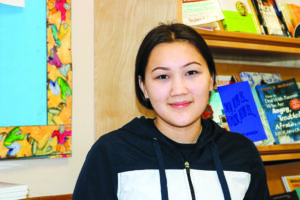Canada has been changing as the decades roll on and the growing acceptance of a more diverse population can be felt in every corner of the nation, from coast to coast to coast.
Nunavut is no exception as it becomes increasingly connected to the rest of the country and the globe. Monumental changes have taken place in terms of language, culture and demographics.
Now, more than ever, southern peoples are finding their home in the North and are in turn becoming exposed to Inuit culture and lifestyles.
As seniors at Inuksuk High School generally expressed a positive experience in last week's article, ("High school seniors talk classroom diversity," Jan. 13) student Kiersten Williams expressed a bit of frustration at differences between cultural norms.

Rajnesh Sharma/NNSL photo
"There's someone that doesn't agree or understand why and how we do the things we do based on culture," said Williams. "And that's always been one of my challenges growing up is having to explain my culture and why I do the things how I do it."
Undoubtedly this sentiment is shared by many Nunavummiut and is a natural result of cultures coming together.
Something like seal, walrus or whale hunting may seem like an alien concept to your average Canadian from down south but in this natural conclusion of cultures mixing lies a learning opportunity.
Nunavut has been and always will be the home of the Inuit: it's their land, their culture, their language and their institutions. When they welcome southerners into their community, these newcomers have a chance to be exposed to and learn about the ways of the Inuit and their perspectives on life in Canada.
Whether those southerners stay in the territory and eventually move elsewhere, they will forever have their memories of the Inuit way of life and a better understanding than most Canadians.
Here lies a large opportunity for Nunavummiut themselves. In addition to exposing southerners to different perspectives, Nunavummiut also become exposed to different ideas as well from other corners of Canada and beyond.
Some residents may not have the opportunity to travel far and wide until later in life but through these personal connections with community members, they can get perspectives on how people live elsewhere with different climates, cultures and ways of life.
The mixing of ideas and cultures is happening across Canada, whether in English, French or Inuktitut-speaking classrooms and the growing pains of a changing population is felt by many, but now more than ever Inuit can take pride in themselves.
They have more reason now than ever and the means to stand up and tell their own stories and give people first-hand experiences of their culture as the nation collectively develops a 21st century Canadian identity – one part of which is positively Inuit.